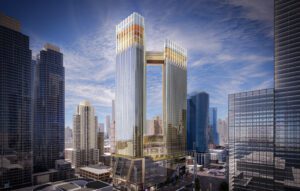Examining the Proposal for a 1.8 Million Sq. Ft. Casino in New York City
A proposal for a 1.8 million sq. ft. casino in New York City has been making headlines in recent months, with proponents touting the potential economic benefits and opponents expressing concerns about the social and environmental impacts of such a large development. In this article, we will examine the proposal and explore both sides of the debate.
The proposed casino would be located in the Willets Point neighborhood of Queens, adjacent to Citi Field and the USTA Billie Jean King National Tennis Center. The development would include a 1,000-room hotel, a convention center, retail space, and a parking garage. The casino itself would feature 5,000 slot machines and 200 table games, making it one of the largest casinos in the world.
Proponents of the casino argue that it would bring much-needed jobs and revenue to the city. The project is expected to create 10,000 construction jobs and 5,000 permanent jobs once it is operational. In addition, the casino would generate an estimated $1 billion in annual revenue for the state and city, which could be used to fund education, healthcare, and other public services.
Opponents of the casino, however, have raised a number of concerns about the project. One major issue is the potential for increased problem gambling and other social problems associated with casinos. Studies have shown that proximity to a casino can lead to higher rates of gambling addiction, bankruptcy, and crime. Critics also worry about the impact on local businesses, as the casino would likely draw customers away from other entertainment venues in the area.
Another concern is the environmental impact of such a large development. The proposed site is currently home to several auto repair shops and junkyards, which have contaminated the soil with hazardous chemicals. Some environmental groups worry that building a casino on this site could exacerbate these pollution problems and harm public health.
Finally, some opponents argue that the casino would be a poor use of public land. The proposed site is owned by the city and was originally intended for affordable housing and other community uses. Critics argue that a casino would not serve the needs of the local community and would instead benefit wealthy developers and out-of-town tourists.
In conclusion, the proposal for a 1.8 million sq. ft. casino in New York City is a controversial issue that has sparked debate among residents, politicians, and business leaders. While proponents argue that the project would bring jobs and revenue to the city, opponents worry about the social, environmental, and economic impacts of such a large development. As the debate continues, it will be important to consider all sides of the issue and weigh the potential benefits and drawbacks of this proposed casino.
